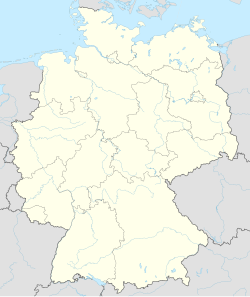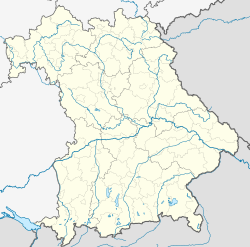Theilenhofen
Theilenhofen | |
|---|---|
Location of Theilenhofen
within Weißenburg-Gunzenhausen district  | |
 Location of Theilenhofen | |
| Coordinates: 49°5′N 10°51′E / 49.083°N 10.850°E | |
| Country | Germany |
| State | Bavaria |
| Admin. region | Mittelfranken |
| District | Weißenburg-Gunzenhausen |
| Municipal assoc. | Gunzenhausen |
| Subdivisions | 5 Ortsteile |
| Government | |
| • Mayor (2020–26) | Helmut König[1] |
| Area | |
• Total | 20.32 km2 (7.85 sq mi) |
| Elevation | 494 m (1,621 ft) |
| Population (2023-12-31)[2] | |
• Total | 1,172 |
| • Density | 57.68/km2 (149.4/sq mi) |
| Time zone | UTC+01:00 (CET) |
| • Summer (DST) | UTC+02:00 (CEST) |
| Postal codes | 91741 |
| Dialling codes | 09834 |
| Vehicle registration | WUG |
| Website | www.theilenhofen.de |

Theilenhofen is a municipality in the Weißenburg-Gunzenhausen district, in Bavaria, Germany. An important part of the local history is the Roman camp Iciniacum, near the Limes Germanicus. This fortification and Roman village was erected around 100 AD and destroyed c. 260 AD by the Germanic Alemanni. Today you can see only the Roman Military Bath in this area. It was first found in 1820.
Books about the Roman Camp
[edit]- Dietwulf Baatz: Der Römische Limes. Archäologische Ausflüge zwischen Rhein und Donau. 4. Auflage, Gebr. Mann, Berlin 2000, ISBN 3-7861-2347-0 (German language)
- Heinrich Eidam: Das Kastell Theilenhofen. At: Ernst Fabricius, Friedrich Hettner, Oscar von Sarwey: Der obergermanisch-raetische Limes des Römerreiches B VII Nr 71a, Petters, Heidelberg, 1905 (German language)
References
[edit]- ^ Liste der ersten Bürgermeister/Oberbürgermeister in kreisangehörigen Gemeinden, Bayerisches Landesamt für Statistik, 15 July 2021.
- ^ "Alle politisch selbständigen Gemeinden mit ausgewählten Merkmalen am 31.12.2023" (in German). Federal Statistical Office of Germany. 28 October 2024. Retrieved 16 November 2024.


